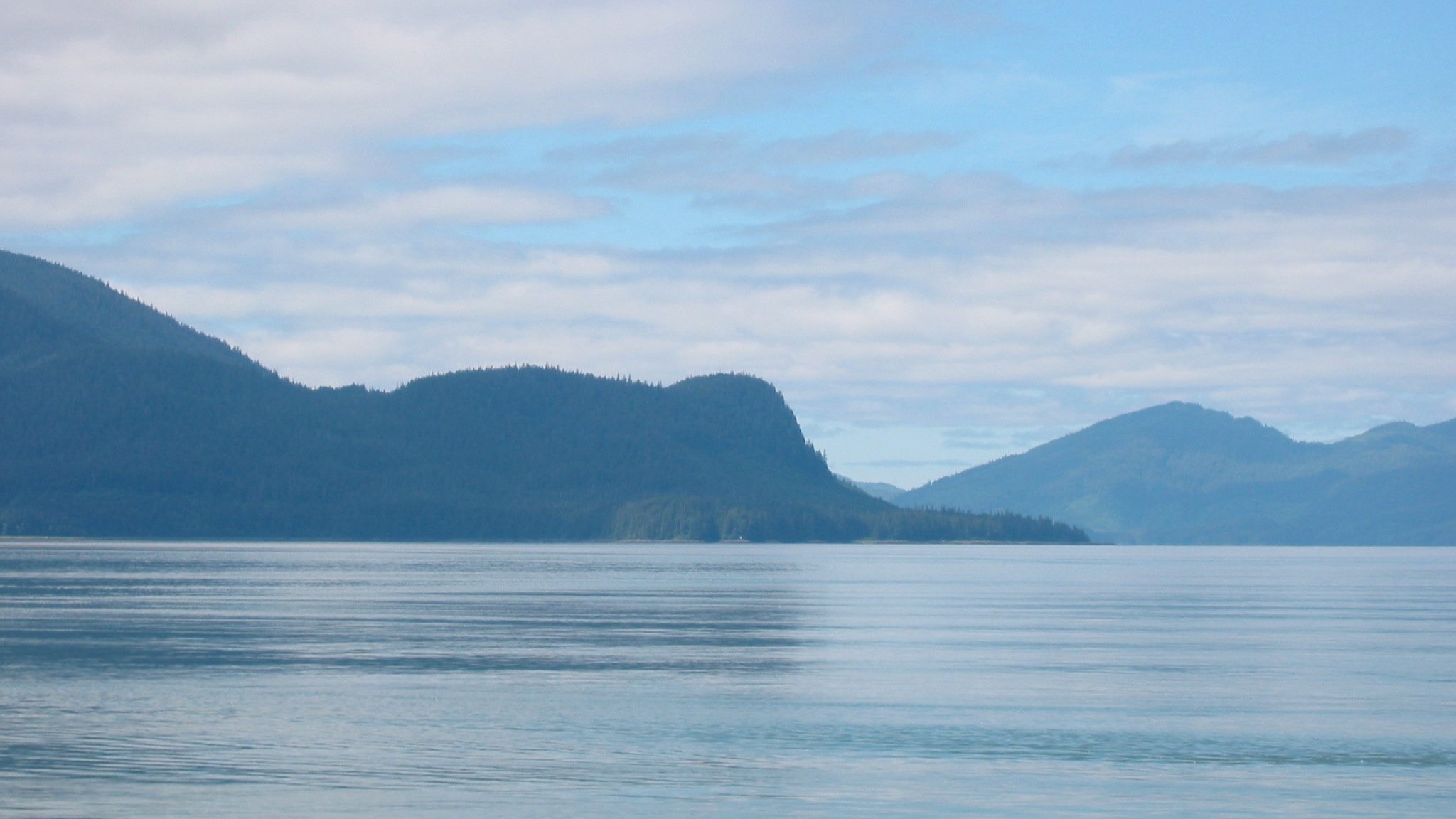How Elephant's Nose Got Its Name
Ask me to name an iconic Wrangell landmark, I’ll pick The Nose every time. Once you see it, you’ll never look at it another way.
This is the story of how Elephant’s Nose got its name.
Woronkofski Island
Woronkofski Island (west) and Wrangell Island (east). (source: openstreetmap.org)
Elephant’s Nose sits at the northern tip of Woronkofski Island, just 4.5 miles west of Wrangell Island, across the Zimovia Strait.
While Woronkofski Island’s name is from Russian naval Lieutenant Woronkofski, the island is an ancestral ground of the Tlingit. In 1946, tribal elder Thomas Ukas recalled:
“Woronkofski Island was a hunting ground, and there was only one place where the people were allowed to camp. All the Wrangell people went there to get deer, salmon, clams, seaweed, cockles, crabs, and mussels. Now mostly white people use that area.”
Young and In Love
Fannie Kellogg Young
Reverend S. Hall Young
By 1878, Fort Wrangel and neighboring Ḵaachx̱ana.áakʼw were in the throws of the Cassiar Gold Rush. The Army attempted to bring order, but it gave up and turned over the fort buildings to Presbyterian missionaries. The brand-new minister S. Hall Young arrived that year, but he disappointed everyone by coming alone. Everyone knew a minister’s job required a wife.
Reverend Young courted Fannie Kellogg, a fellow Presbyterian missionary. In December 1878, they married in Sitka and shortly thereafter returned to Fort Wrangel.
They arrived in Fort Wrangel with hopes, dreams, and a little dog named Stickeen. Immediately on arriving, Reverend Young was informed that he’d have perform a single funeral ceremony for both a man shot dead and the man who was hanged for shooting him.
The newlyweds set aside their surprise and headed to their home: a small log cabin on the front edge of the abandoned Army garrison, with a view overlooking the water.
The Youngs’ family home is near the bottom-left corner of this photo, sitting next tothe tall, two-chimney Customs House. This photo was taken around 1899. (image source: Wikipedia)
This photo from the 1920s shows the Youngs’ family home. By this point, it was the home of the Merlin Elmer Palmer American Legion Post.
Today, this is the area in front of Wrangell’s US Post Office. But in 1878, this was where Fannie Young gazed west across the Zimovia Strait to the islands on the horizon. The nearest island to Fannie was Woronkofski, whose northern tip is a long, gentle slope down to the water’s edge. She saw the smooth, rolling contours of Woronkofski’s top ridge, and it summoned a vision in her mind.
In his autobiography The Mushing Parson, S. Hall Young recalled:
“Eight miles directly west of the town looms the point of Woronkofski Island, afterwards called by my wife ‘Elephant Point’ because of its striking resemblance to the huge pachyderm.”
Decades later, the Youngs’ daughter returned to Wrangell and confirmed the story. The November 12, 1954 Wrangell Sentinel reported:
“It was Mrs. Young, on her wedding trip here… that named Elephant’s Nose. When she first saw it she exclaimed that it ‘looked just like an elephant’s nose’—and the name stuck.”
The Legacy of Elephant’s Nose
Wrangell’s earliest newspapers began at the turn of the century, and they routinely used the name Elephant’s Nose. Since the 1910s, its name has appeared on official maps and guides for the area.
It’s been the site of timber and mining operations. The water around Elephant’s Nose is popular for fishing, as well. In 1955, it’s where Doris Iversen reportedly caught a 74-pound king salmon during the salmon derby.
Many ships cruise up the western side of Woronkofski Island. When a ship passes the northern tip of Woronkofski Island on its way to Wrangell, it comes into view. Locals call this “rounding the nose.”
Perspective
All these years later, it still looks like an elephant. But that all depends on your perspective.
Wrangell raconteur Art Clark used to live on a hill with a view of Zimovia Strait and Elephant’s Nose. He wrote about Elephant’s Nose in his book, A Touch of Wrangellitis:
“A good view of our faithful old elephant can only be seen from the town of Wrangell-from any other angle it becomes distorted.”
In many ways, Elephant’s Nose is a metaphor. From Wrangell, you’d swear it looks like an elephant. And there are few who would challenge you. But change your perspective, get closer, and see it from the other side, it stops looking like an elephant.
In a region known for its dramatic natural features, like Devil’s Thumb and Castle Mountain, Elephant’s Nose is a gentle giant, a vision for all of Wrangell to enjoy. 🐘




